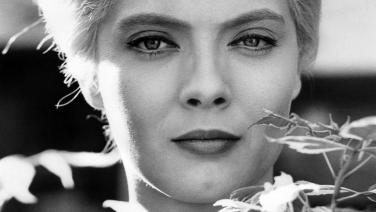
Saio bikoitz honek zinearen historiako ezinbesteko zinemagileari omenaldia izan nahi du, bere lehenengo lanak berreskuratuz
18:00
La pointe courte, Agnès Varda, France, 1954, 86’
Varda’s first feature, made during the time when the nouvelle vague was something that still couldn’t be imagined, when those directors, male and female, who were going to incorporate modernity into their stories and images were still posing to themselves the questions that were going to change cinema forever. Varda was then a young amateur photographer who decided to take the leap into the world of cinema and embarked upon her first experience, with the creation of her own cooperative.
The film, on the one hand, draws on neorealism and offers a documentary-like portrait of the daily life in the fishing district of a village in south west France: day-to-day life there, with problems facing the people there, for work and survival. At the same time, it tells the story of a young couple in crisis – she, Parisian, he, a native of the village. This very free combination between a story of intellectual fiction and the more observational prism was something of a novelty at the time, and proved a great revelation in terms of the type of cinema that was on the cusp of being brought to the world. Among those credited in the film, the name of another young filmmaker to whom special attention must be drawn, just so we are in no doubt we are indeed talking about a cardinal, most fundamental moment in the history of cinema: one Alain Resnais, credited as editor.
21:00
Cléo de 5 à 7, Agnès Varda, France, 1962, 90’
Is Agnès Varda the youngest, most curious and freest filmmaker in the world? Now eighty, we can say “yes, she is”, because her spirit and way of understanding cinema and life as a whole are still so purely “nouvelle vague”. At least, she showed this with her latest film Visages Villages, premiered in the San Sebastian Film Festival to celebrate her Donostia Prize. But, how did everything begin?
Let’s make a review to the birth of the Nouvelle Vague: 1958, Claude Chabrol, Le beau Serge. 1959, François Truffaut, Les quatre cents coups. 1959, Alain Resnais, Hiroshima mon amour. 1960, Jean-Luc Godard, À bout de souffle. 1961, François Truffaut, Jules et Jim. 1962, Agnès Varda, Cléo de 5 à 7: Cléo is a pop singer from Paris that is wandering around the city waiting for a medical result. Ninety minutes of real time that reveal her life, dreams and fears; and the portrait of the youth facing future and destiny.
This double session wants to be an homage to this filmmaker, key in the history of cinema, going back to her first works.
